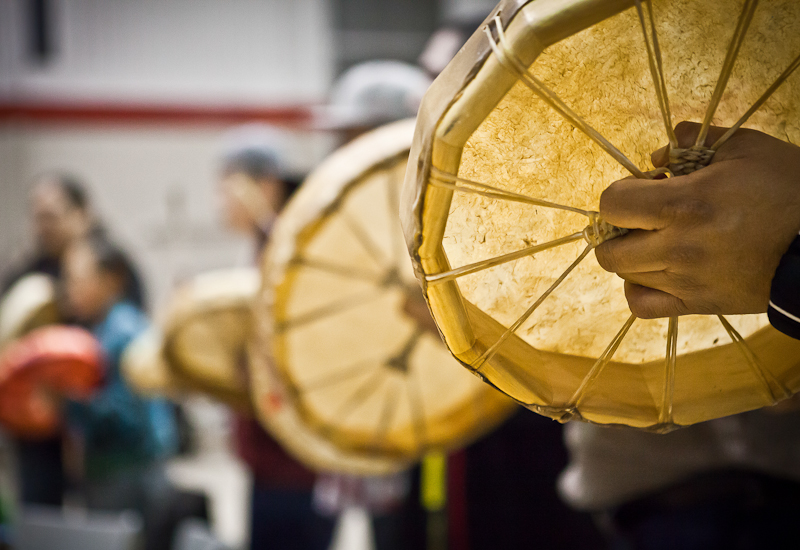The Raven’s Nest was filled with noise and energy on the night of Feb. 7 as the Centre for Aboriginal Culture and Education (CACE) held their fifth annual winter round dance, a night of First Nations dancing and feasting open to the general public.
The crowd was a mix of students and locals of all ages, including young children, and the event opened with a pipe ceremony performed by Elder Thomas Louttit.
With its dual purpose of connecting both aboriginal and non-aboriginal people in the area with culture and community, the round dance created a low-pressure, high-energy space on campus.
CACE cultural liaison officer Naomi Sarazin, who organized the event, said she wanted to bring Ottawa a wintertime alternative to complement summertime powwows.
“I lived out in Alberta for a year,” she said. “I attended some of the round dances out there, and really enjoyed it—the ceremony, the community—it brought everyone together.”
“At the powwows, there are usually big drums, and people dance in their regalia. Here, people just dress in their regular clothes, and the songs have a different beat,” Sarazin explained.
The dance itself is also different: dancers hold hands in a large circle around the drummers, and side-step around them to the beat of the music.
The Master of Ceremonies for the evening joked to newcomers about what to expect.
“Some people do kind of a robot round dance,” he said, “while others do what we call a James Brown round dance. You’ll see.”
Natasha Commanda, who came out from Kitigan Zibi for the event, said she appreciated the chance to reconnect with friends and to celebrate.
“In the summertime, we’re at powwows every weekend,” she said. “I like the round dances in the wintertime. It’s a celebration just like powwows are.”
CACE resource co-ordinator Rebekah Elkerton stressed the importance of making cultural connections for Aboriginal students.
“Round dances are held usually in Aboriginal communities like reserves, and they were missing from the Ottawa landscape,” she said. “We try to make it the same—exactly like any other round dance.”
Carleton student Amelia Howell came to the round dance to write a paper on Aboriginal music for one of her classes and said she wasn’t sure beforehand what to expect.
“Since it’s my first round dance, I came in and I just wanted to absorb whatever I could,” she said. “I love it. It’s such a great energy, and I just feel really part of a community that I probably wouldn’t have been exposed to if I hadn’t done this assignment.”






